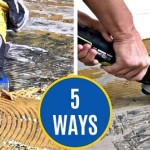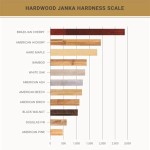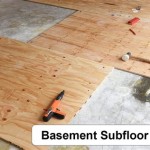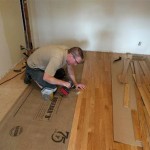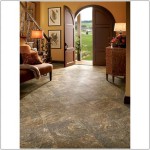Is Vinyl Plank Flooring Safe for Stairs and Landing?
The utilization of vinyl plank flooring has seen a significant increase in residential and commercial spaces due to its durability, aesthetic versatility, and relative affordability. However, when considering flooring options, particularly for areas like stairs and landings, safety becomes a paramount concern. This article examines the suitability of vinyl plank flooring for these specific areas, focusing on factors influencing safety, installation considerations, and potential drawbacks.
The overall safety of vinyl plank flooring on stairs and landings hinges on a combination of factors, including the specific type of vinyl plank, the quality of installation, and the implementation of appropriate safety measures. While vinyl plank itself boasts certain inherent advantages, such as water resistance and ease of maintenance, its use on stairs and landings requires careful consideration to mitigate potential hazards.
Slip Resistance and Traction
A primary concern when using any flooring material on stairs is slip resistance. Stairs, by their very nature, represent a higher risk of falls compared to flat surfaces. Vinyl plank flooring varies in its surface texture and finish, which directly impacts its slip resistance properties. Some vinyl planks feature embossed surfaces or textured finishes designed to enhance traction. These options are generally more suitable for stair applications.
The American Society for Testing and Materials (ASTM) provides standardized tests to measure the slip resistance of flooring materials. Specifically, ASTM D2047, the "Standard Test Method for Static Coefficient of Friction of Polish-Coated Flooring Surfaces as Measured by the James Machine," is a relevant metric to consider. A higher coefficient of friction indicates better slip resistance. When selecting vinyl plank flooring for stairs, it is crucial to review the manufacturer's specifications regarding slip resistance and compare them to industry standards and recommendations. Failing to do so can create a hazardous environment, increasing the likelihood of slips and falls.
Adding non-slip treads or runners to vinyl plank stairs can significantly improve safety. These additions provide increased traction and can be particularly beneficial in households with young children, elderly individuals, or those with mobility issues. Several types of stair treads are available, ranging from adhesive-backed rubber or vinyl treads to carpeted runners that are secured with fasteners. The selection should be based on aesthetic preferences, ease of installation, and the level of slip resistance required.
Maintaining the cleanliness of vinyl plank stairs is also essential for maintaining slip resistance. Dust, dirt, and spills can all reduce the traction of the flooring surface. Regular cleaning with appropriate cleaning solutions will help keep the stairs safe. It is generally advisable to avoid using overly glossy or slippery cleaning products, as these can exacerbate the problem.
Proper Installation Techniques
The installation process plays a critical role in the safety and longevity of vinyl plank flooring on stairs. Improper installation can lead to loose planks, uneven surfaces, and potential tripping hazards. It is highly recommended that a professional flooring installer be employed, particularly for complex staircases or intricate designs. A professional installer will have the necessary expertise and tools to ensure a secure and even installation.
Preparing the subfloor is a crucial first step. The subfloor must be clean, dry, level, and structurally sound. Any imperfections in the subfloor, such as cracks, bumps, or unevenness, must be addressed before installing the vinyl planks. Failure to properly prepare the subfloor can result in the vinyl planks shifting or becoming loose over time, creating a safety hazard. Self-leveling compounds can be used to correct minor imperfections in the subfloor.
When installing vinyl planks on stairs, it is important to use a high-quality adhesive that is specifically designed for vinyl flooring. The adhesive should be applied evenly and according to the manufacturer's instructions. Using the wrong type of adhesive or applying it incorrectly can result in the planks not adhering properly, leading to them becoming loose or shifting. It is also important to ensure that the adhesive is compatible with both the vinyl plank and the subfloor material.
Stair nosing is an essential component of a safe and well-installed vinyl plank staircase. Stair nosing is a rounded or beveled edge that is installed on the edge of each step. It provides a finished look, protects the edges of the planks from damage, and, most importantly, improves visibility and grip. Stair nosing should be securely attached to the stair tread and should be flush with the surface of the vinyl plank. There are different types of stair nosing available, including those made of vinyl, metal, and wood. The selection should be based on aesthetic preferences and the overall design of the staircase.
Gaps between the vinyl planks can also pose a tripping hazard. It is crucial to ensure that the planks are tightly fitted together during installation. Using tapping blocks and a rubber mallet can help achieve a tight fit. In areas where gaps are unavoidable, such as around railings or in corners, appropriate fillers or sealants should be used to close the gaps and prevent tripping hazards.
Durability and Maintenance
The durability of vinyl plank flooring is a significant factor in its suitability for stairs and landings. Stairs are high-traffic areas that are subjected to considerable wear and tear. Vinyl plank flooring comes in various thicknesses and wear layer ratings. The wear layer is the top layer of the plank that protects it from scratches, stains, and fading. A thicker wear layer will provide greater protection and extend the life of the flooring. For stairs, it is recommended to choose vinyl plank flooring with a wear layer of at least 20 mils.
The construction of the vinyl plank itself also influences its durability. Some vinyl planks are constructed with a solid core, while others have a layered construction. Solid core vinyl planks are generally more durable and resistant to dents and impacts. Layered vinyl planks may be more susceptible to damage if they are not properly supported or if they are subjected to heavy loads.
Regular maintenance is essential for preserving the appearance and extending the life of vinyl plank flooring on stairs. Routine cleaning with a damp mop and a mild detergent will help remove dirt and debris. Avoid using abrasive cleaners or scouring pads, as these can damage the surface of the vinyl plank. Spills should be cleaned up promptly to prevent staining. Protective mats or rugs can be placed at the top and bottom of the stairs to reduce wear and tear.
Over time, vinyl plank flooring can show signs of wear and tear, such as scratches, dents, or fading. Minor scratches can often be repaired with touch-up kits or scratch concealers. More significant damage may require replacing individual planks. It is advisable to keep a few extra planks on hand for repairs. When replacing a plank, it is important to ensure that the replacement plank is the same type and color as the original plank.
Furthermore, the type of traffic that the stairs experience will impact the longevity of the vinyl plank flooring. High-volume traffic, especially from pets or children, can accelerate wear and tear. Implementing preventative measures such as requiring shoes to be removed or using stair runners can mitigate these effects.
In summary, the safety of vinyl plank flooring for stairs and landings depends on various factors related to material selection, installation quality, and ongoing maintenance. By carefully considering these aspects, homeowners and builders can make informed decisions that prioritize safety and ensure the long-term suitability of vinyl plank flooring in these critical areas of the home.

Luxury Vinyl Tile Seamless Upstairs And Downstairs Solution

Pros And Cons Of Installing Vinyl Flooring On Stairs Lx Hausys

Can You Install Luxury Vinyl Plank On Stairs

How To Install Vinyl Plank Flooring On Stairs In 6 Steps

An Expert Guide To Vinyl Plank Flooring For Stairs Direct Blog

Steps To Install Lvp On Stairs Flooring Insights

Pros And Cons Of Installing Vinyl Flooring On Stairs Lx Hausys

Pros And Cons Of Installing Vinyl Flooring On Stairs Lx Hausys

How To Choose Flooring For Stairs

How To Match Stairs Vinyl Flooring 1800remodel
See Also
